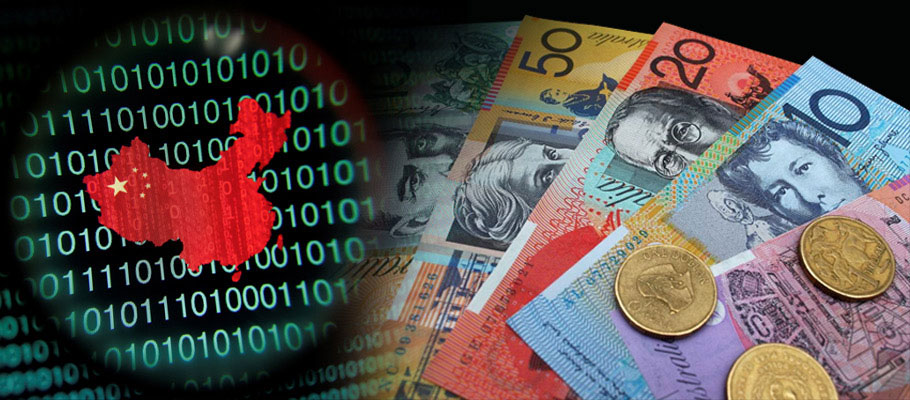
Published: November 1st, 2023
The Australian Dollar (AUD) lost favour on global forex markets this week as traders assessed the impact of underwhelming Chinese economic statistics for October.
The significance of Chinese data as a price driver for AUD was re-affirmed by the downbeat response to news from Beijing that China’s official manufacturing PMI fell back into negative territory in October, falling to 49.4 from 50.1.
Traders had been looking for another reading of 50.1. Their disappointment pulled AUD lower against all G10 majors except for the Yen, which was facing challenges of its own, at time of writing, in the aftermath of the most recent the Bank of Japan policy update.
China's backslide into economic contraction will cause traders to question whether a series of steadily improving data prints out of Beijing has run its course.
China watchers have been looking for the economy to bounce back ever since the lifting of Covid restrictions in early 2023. The assumed post-Covid boom never came, however positive data prints starting in Summer suggested that 'peak pessimism' towards China was over.
October’s disappointing PMI data is now driving Aussie Dollar weakness. China’s non-manufacturing PMI also underwhelmed with a decline to 50.5 from 51.6. Economists were expecting a more upbeat 51.8.
A market note from Westpac said that China’s roiling property market negatively to the PMI print, though infrastructure investment and construction stayed robust. ‘The return to what looks like sluggish or negative growth will put pressure on politicians and the People's Bank of China to take steps that will boost the economy.’
The GBP/AUD exchange rate was 0.20 per cent higher on Tuesday, reaching 1.9114. The EUR/AUD exchange rate was also up by 0.38 per cent at 1.6706. The AUD/USD rate was down by a quarter of a per cent at 0.6355 at time of writing.
In late Summer, The Australian Dollar (AUD) dropped to a fresh 2023 low against the US Dollar and was softer against all its G10 peers after the publication of data showing China had sharply reduced imports of Australian goods in July as the economic slump in the world’s second-largest continued.
Beijing statisticians reported a 12.3 per cent year-on-year fall in imports, down from June's 6.7 per cent reduction, and below consensus anticipation of a negative 5.5 per cent reading. The official figures suggest Australian exports to China fell by close to 11 per cent in July, which sent AUD tumbling.
Those numbers pointed to an ongoing slowdown in China's economy amidst a broader cooling of demand globally for Chinese goods. The country’s exports fell 14.4 per cent year-on-year in July after falling by 12.3 per cent in June. Analyst consensus was looking for a drop of ca. 13.1 per cent.
A market analysis by Pantheon Macroeconomics in London said that Chinese exports ‘fell at a faster rate last month, which suggests cooling global demand. What we’re witnessing now is a pronounced downward trend for Chinese exports since the July data published this week is even worse than analysts had predicted.’
The data’s impact on the Aussie was notable with AUD falling against every one of the other G10 majors. The AUD/USD exchange rate fell 0.69 per cent to 0.6525, placing the pair in sight of a major support line (0.65). Pantheon Economics says if that line breaks it could lead to a decline back to lows last seen in 2022, when the pair reached 0.64.
‘With no Australia-centric data releases this week AUD was always going to be susceptible to news from China in the near-term.’
Back in March 2023 analysts were looking for a ‘China reopening’ rally after the country emerged from lockdowns following the latest COVID wave. It initially had a smaller impact on the Australian Dollar than expected, but currency strategists at Bank of America still believed the Aussie could benefit from external factors.
A report from the Asia Forex Strategy unit at Barclays said the ‘upside risk to Chinese trade growth (hadn’t) been accurately priced.’ The assessment comes as the Australian fiat extends a losing streak against the Greenback, Euro, and Pound while the rebound analysts have been waiting for in the world's second-largest economy had so far underwhelmed.
China’s National Bureau of Statistics reported that the country’s industrial profits were down almost 23 per cent year-on-year for January and February 2023.
But Barclays research also suggested China’s economy would gain momentum in the coming months, despite the soft start.
It’s a fact that AUD has underperformed when compared to other assets that tend to sway with the ups and downs of China's economy. With the end of Beijing’s zero-covid policy, growth was expected to accelerate.
Barclays analysts said there were indications that 'green shoots are starting to appear,’ particularly in China's property sector. Increasing international travel bookings from China also boded well for Australia's trade outlook.
It was all broadly positive for the Australian Dollar, which had been running in the sand for much of the first quarter, falling back 4.59 per cent against the US Dollar in February and by 2.33 per cent against the pound. Against the Euro, the Aussie fell by 2.14 per cent in February, with a 3.10 per cent loss anticipated for March.
AUD's lower trend began at roughly point where the buzz around China’s ‘great reopening’ started to fade, Barclays said.
In January, investors were betting on a rapid reopening in the world's second-largest economy and gains in the Australian Dollar and other China-focused assets. The return of big-spending Chinese tourists and international students was also tipped to give Dowen Under an additional growth filip.
The Aussie’s setback has sent GBP/AUD higher since early February, peaking on Monday 27th March at 1.8448 after a six-day run of uninterrupted gains. The Aussie to Greenback rate has been trending lower over the same period, touching a low of 0.6562 in late March.